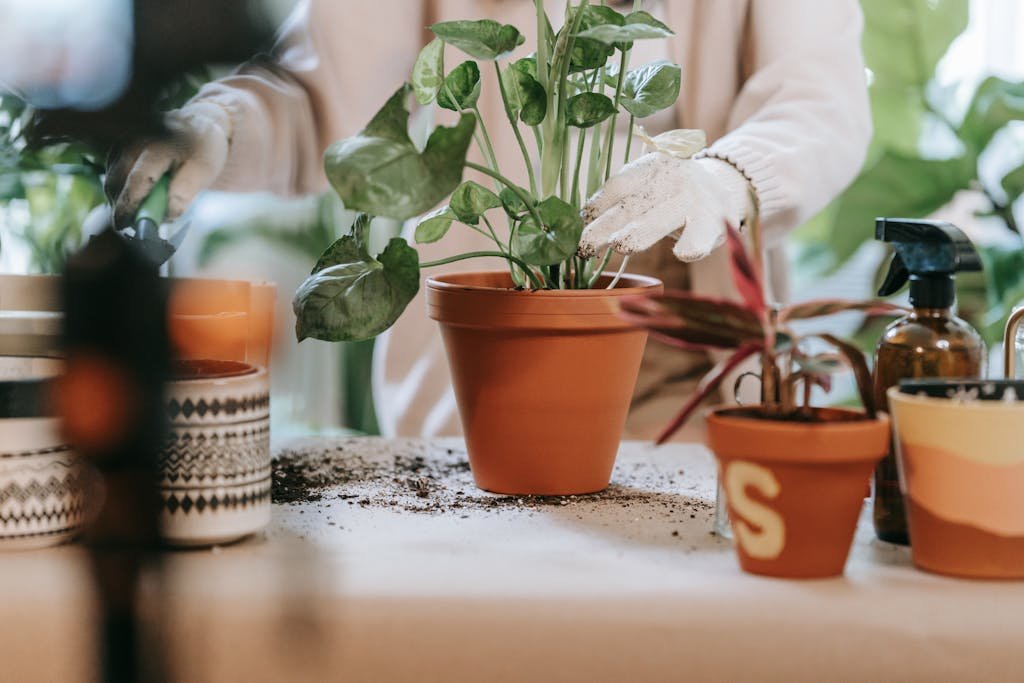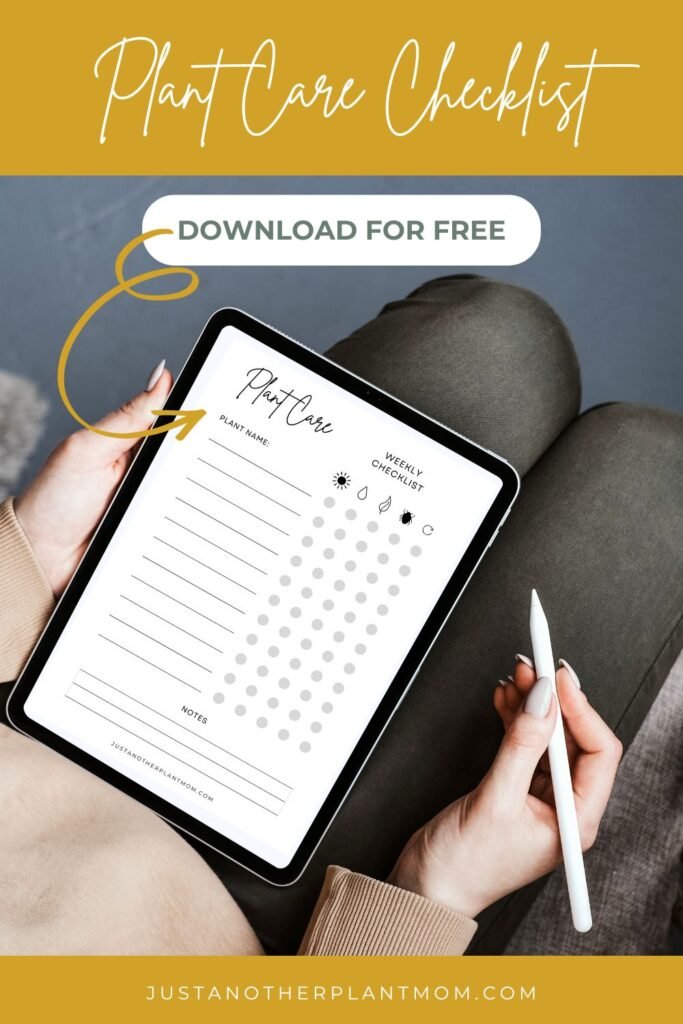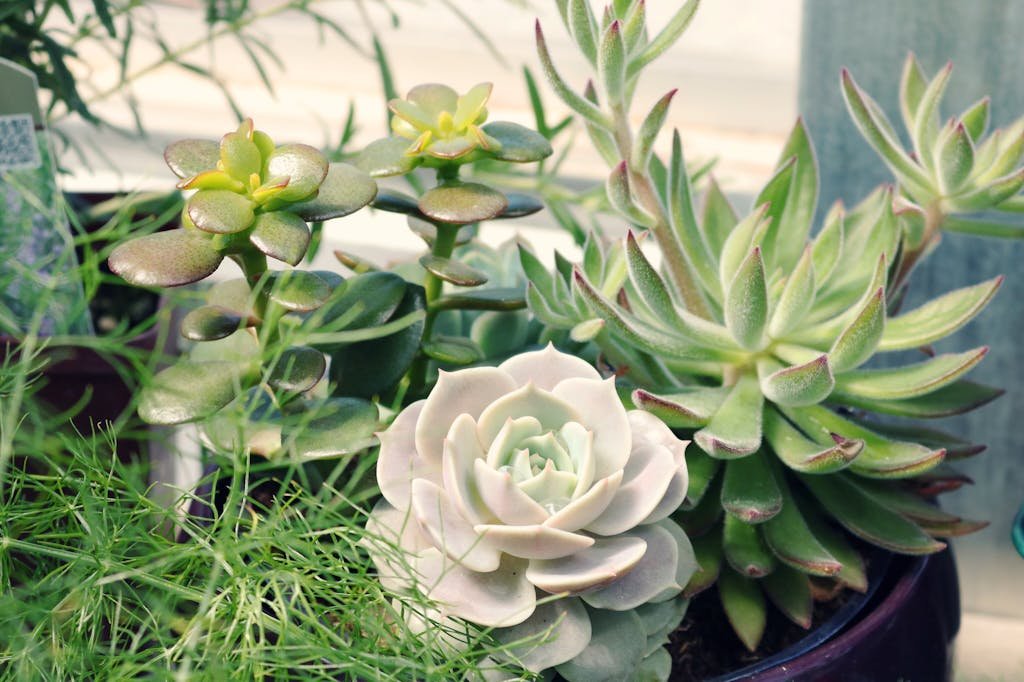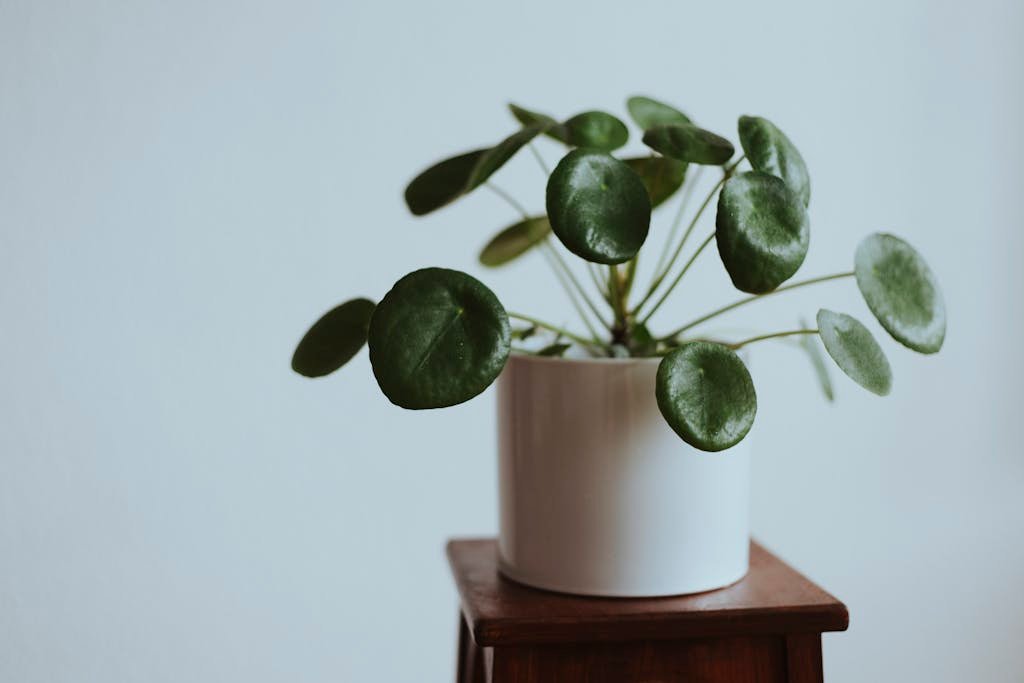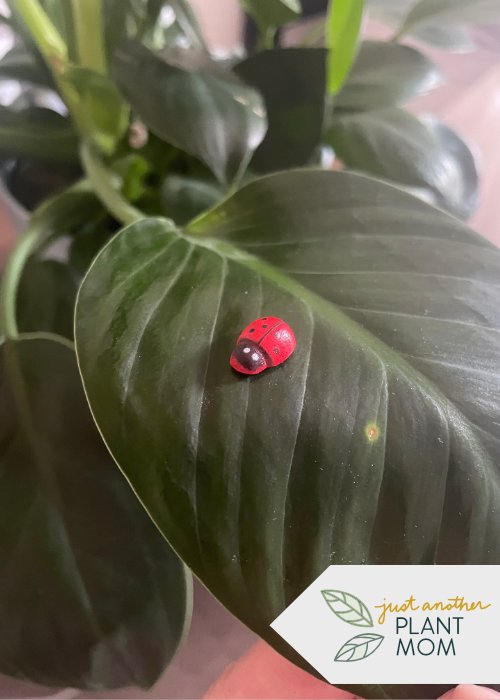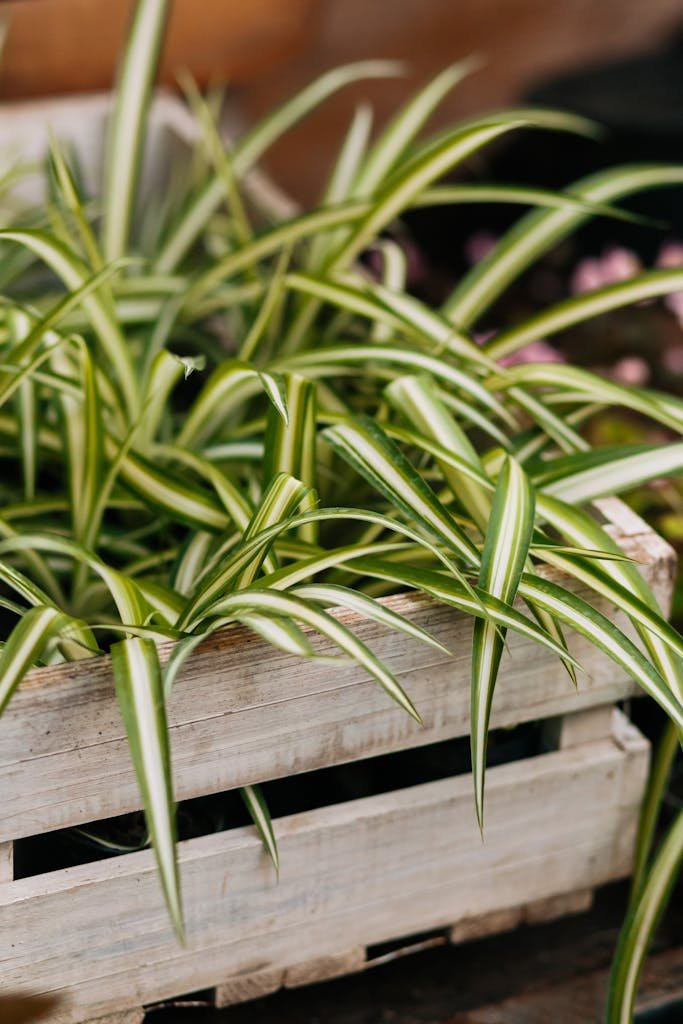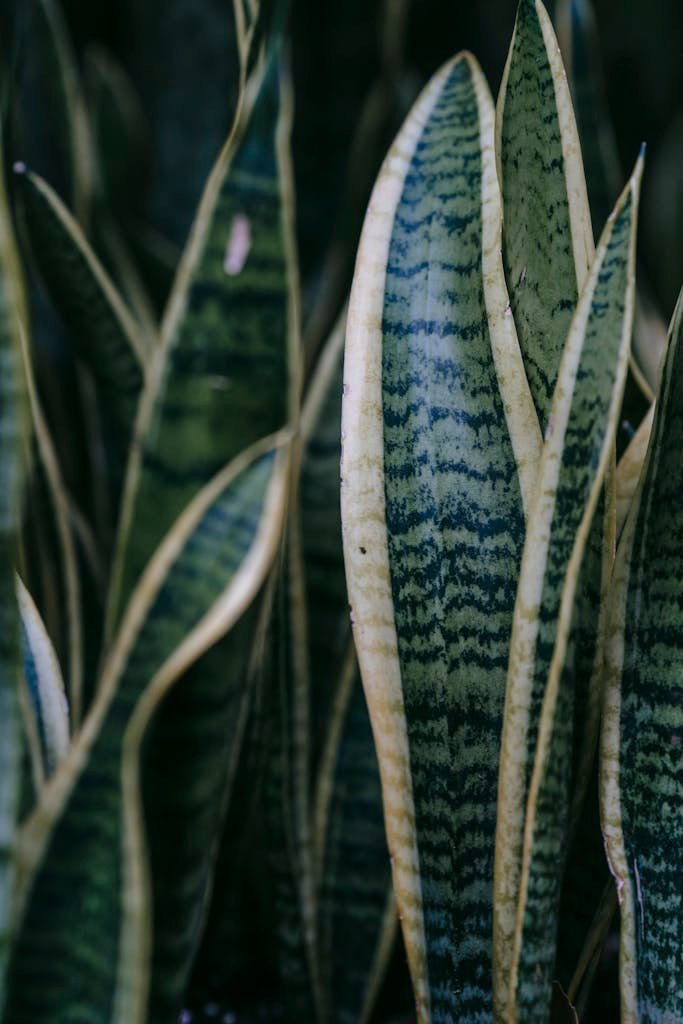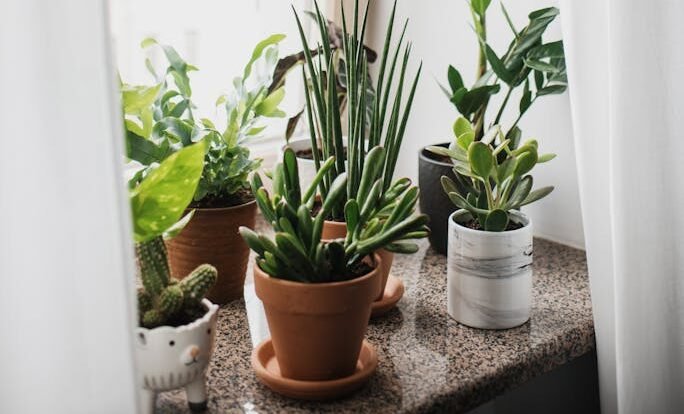A beginner’s guide to house plant routines (What to do daily, weekly, monthly and seasonally for your plants)
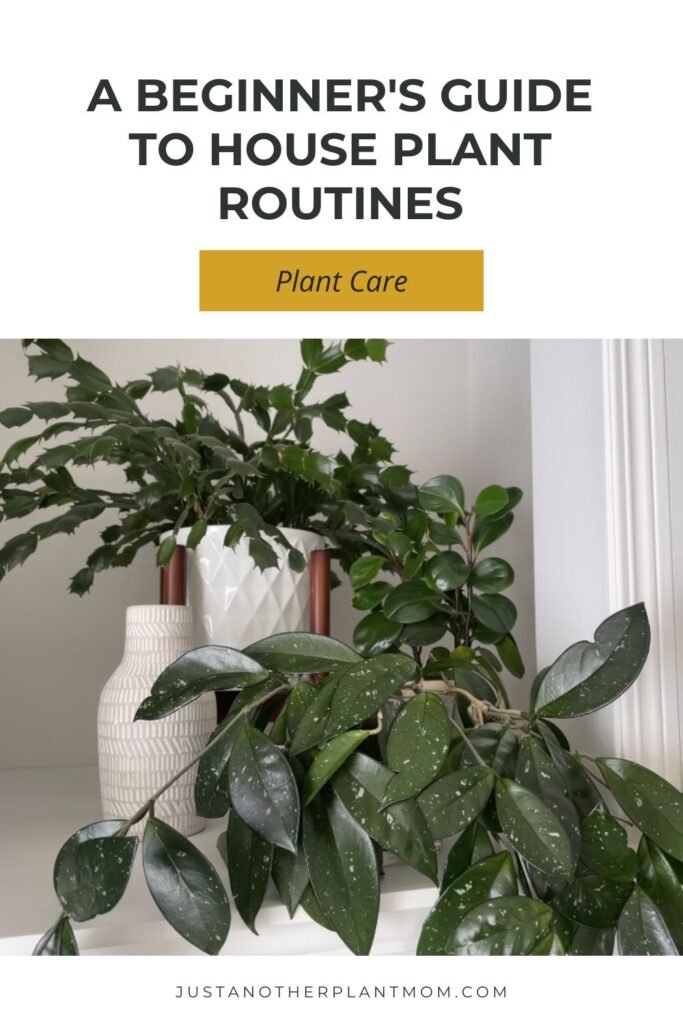
You saw the cutest plant while you were out shopping and decided it had to be yours! Yay! 🎉 You brought it home…found the perfect spot for it…it’s looking cute… But now what??
Whether this is your first houseplant, or you’re starting to build your collection, you’re probably wondering what kind of “plant chores” you need to do to keep your new plant baby happy and healthy, right? How often should you water? When should you fertilize? What about repotting? And if you’re anything like me, you’re at risk of forgetting all about those plant chores if they aren’t scheduled or part of your regular routine. (Until a few weeks later when you look over and notice the crispy leaves on your new plant…ooops!)
Well luckily, most plants aren’t too demanding when it comes to care, but they do require that the basics are taken care of: sun, water and nutrients. I find it helpful to have all of my plant care tasks grouped into routines so that I know roughly when it’s time to get them done. I personally schedule some of these tasks into my phone so that I don’t forget to do them, but you can use whatever system works for you (paper, calendar, reminder app, etc.)
Daily Routine:
I don’t actually have many items on my daily routine because I don’t have any plants that require daily care. However, I do enjoy puttering around my living room in the morning, tea in hand, checking on my plants, looking for new growth, and just spending time enjoying them. Your routine will likely look different to mine, so do what works for you!
- Open blinds and curtains. Let in that sunshine!
- Mist plants that enjoy it. (This is a little controversial and 100% not necessary, I just enjoy doing it while I check on my plants. I’m always careful not to mist plants that don’t like humidity or water on their leaves.)
Note: If it’s extremely hot and dry over the summer, some plants might need water more often, so it can be a good idea to check them daily in those conditions.
Weekly Routine:
Before we dive into my full weekly routine, I wanted to chat a bit about watering plants on a schedule (and it’s probably not what you think!)
For years, I watered my plants once a week, all on the same day. If a plant was getting close to needing to be watered but wasn’t quite ready, I just gave it a little less water that week. For the most part (with some minor adjustments that I learned along the way) my plants were totally happy with this!
To be clear, this is not the recommended way to water plants. Instead, it’s recommended to wait until the top 1-2 inches of soil has dried out, unless it’s a plant that loves to stay in moist soil. BUT because I’m a someone who tends to be forgetful, watering my plants on a schedule every week kept my plants alive! If I had to constantly remember to check all of my plants to see if they were finally ready to be watered, it just wouldn’t happen and they wouldn’t get watered at all. Instead, I learned to be careful not to overwater, and this worked for me for years.
I wanted to share this personal experience because if you follow any plant accounts on social media, or if Google “How to water plants” or “How often to water your house plants”, you’ll come across a lot of content slamming the idea of watering on a schedule. Now, there is good reason for this—overwatering is the most common issue with house plants, and if you’re watering on a schedule, you absolutely risk overwatering your plants. However, if you are someone who will otherwise forget to water if it’s not on a schedule, then please don’t feel bad about doing what works for you. Instead, be sure to check the soil of each plant and adjust accordingly, and skip watering a plant that week if the soil is still wet. (I wrote an entire blog post about how to water your plants, so be sure to check that out!)
Ok, now that I got that out of the way, here’s what my weekly routine looks like. These days, I generally split my weekly routine into two days. This is because I have a lot more plants now (compared to the early days I mentioned above) so it has become part of my routine to check on them and care for them more often than I used to. I chose two days a week to be my designated “plant chores” days to make sure that I don’t forget. By splitting my weekly routine into two days, I can make sure to have all their needs covered. If you can get everything done in one day a week, by all means, do what works for you!
Note: I don’t always do every one of these things every week…this is more like my ideal week! If I’m really busy, dusting may not happen, but I strive to do it a few times a month at least.
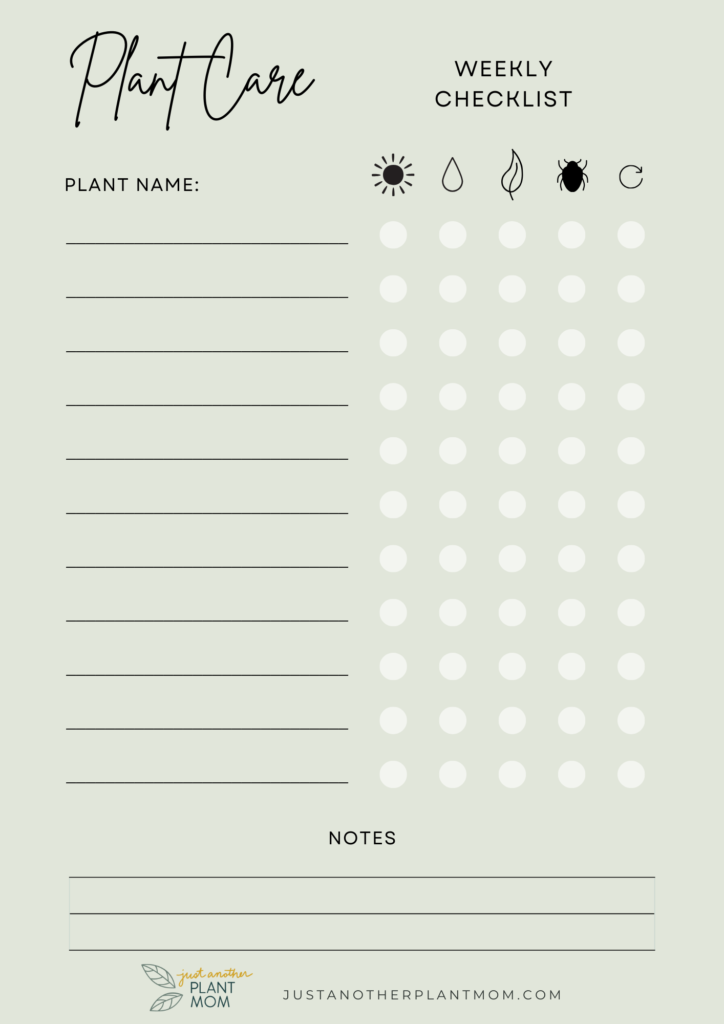
- Check the moisture level of soil and water if needed. Stick your finger into the soil about an inch deep. If it feels dry, it’s time to water. (Remember: While this works for most plants, some plants have different moisture needs, so be sure to do a little research on your plants to see what their needs are.)
- Dust the leaves. Use a damp cloth, or those handy dusting gloves, to go over the surface of leaves. This helps their ability to photosynthesize.
- Inspect for pests or other issues. I combine dusting and inspecting to save time. While you dust the leaves, take a moment to examine them (including the underside) for any signs of pests like aphids, spider mites, or mealybugs. Catching infestations early makes them easier to manage. I also note any changes in my plants (for example, leaves yellowing or dropping) so that I can troubleshoot if necessary.
- Rotate your plants. Again, I do this at the same time as dusting and inspecting. Rotating your plant will help to promote even growth by ensuring all sides receive the same light exposure. I only rotate a small amount each week to avoid any stress to the plant. If your plant is on a trellis or moss pole, then of course, you don’t have to do this. I do it mainly for bushy, compact plants.
- Prune dead leaves or flowers. I prefer to do this to encourage new growth and keep my plants looking tidy.
Download a free black + white printable PDF of my weekly plant care routine here!
Monthly Routine:
Once a month or so I enjoy giving my plants a little spa day. This includes a shower and some plant food! You definitely don’t have to shower your plants, especially if you’ve been dusting the leaves regularly. (BTW if you haven’t been dusting leaves weekly, then definitely aim for a monthly dusting session!)
- Fertilize your plants. Especially during the growing season (spring and summer) your plants will benefit from some extra nutrients. I prefer a balanced liquid fertilizer and usually dilute it to half strength to avoid burning my plants. Check the package of your specific fertilizer for instructions on how to use it.
- Give your plants a shower. I love to take any plants that can be easily moved and place them in the sink or tub for a light shower. Use light pressure and room temperature water. This helps to remove any dust that might be lingering, as well as wash away any pests that might be hiding. It also gives me a chance to give my plants a more thorough inspection, as well as a deep watering. If you have a plant with leaves that are sensitive to water, you can dry the leaves gently with a soft cloth.
Seasonal Routine:
Finally, I wanted to slip in a seasonal routine here because as the seasons change, we often have to adjust our plant care routines slightly. These tasks can be added to your monthly routine.
- Spring: As I mentioned in the monthly routine, spring time is a great time to start fertilizing your plant. It’s also a great time for pruning, propagation and repotting! Check the soil of your plants to see if it needs aeration or a repot (especially if there are other signs that your plant is outgrowing its pot, such as roots peeking out of the drainage holes, stunted growth or being constantly thirsty.)
- Summer: As the temperatures rise, you might have to adjust the location of your plants (if they are getting too much direct sunlight or getting too hot) as well as the frequency of watering (plants might be extra thirsty because of the heat.) Observe your plants for any signs of overheating or sun damage and move them a little further away from windows if necessary.
- Fall: As the days get shorter, your plants will start getting less light. This means growing will slow and they’ll need less water. If you moved them away from windows during the summer, you can move them closer again now.
- Winter: Some houseplants will become dormant in the winter. This often depends on how much artificial light they’re getting too, especially if you use grow lights. But, in general, plants need a lot less water and can usually go without fertilizer over the winter. Try to keep the temperature as consistent as possible for your plants as well.
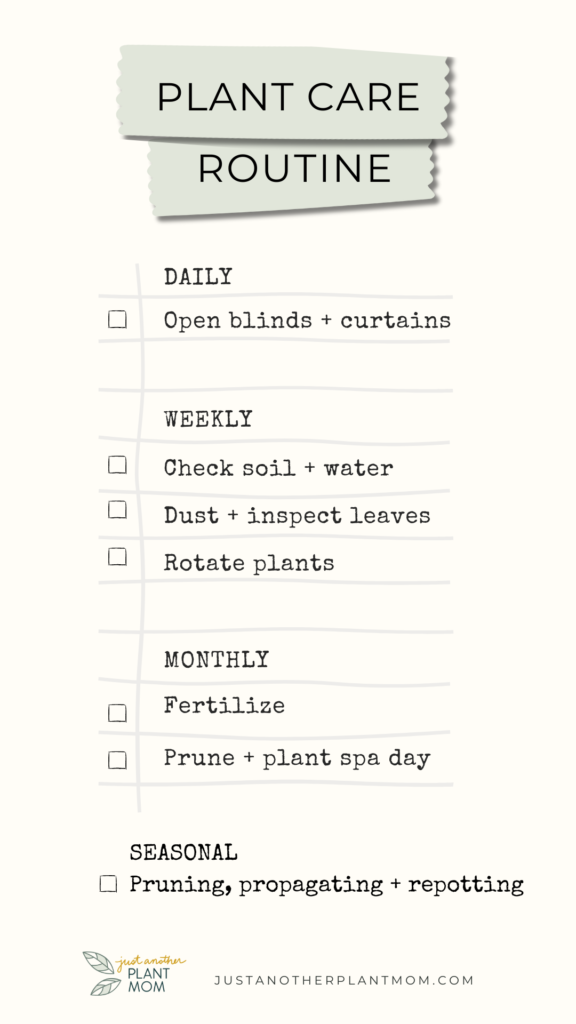
My goal with these daily, weekly, monthly, and seasonal routines is to give you a glimpse into what my plant care routines look like (which have kept my plants happy and healthy) and to give you a starting point as you build your own routines. The ultimate best routine will be the one that you actually follow, so don’t be scared to experiment and adjust until you find what works for you!
